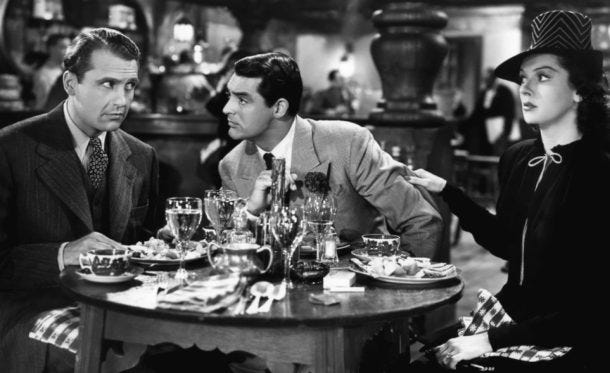Why is it Worth Watching Old Hollywood Films?
The Comedies of Remarriage and the Crafts of Yanagi Sōetsu
When I was growing up near Detroit, the television station TV Ontario always played a double feature of classic movies on Saturday nights, which my family often watched. Through that frequent experience and encouraged by my father’s love for older movies, my preference for classic films was kindled.
To say that I prefer classic films does not mean I like old movies just because they are old. A classic is not just an artwork that is old, nor is it just one that is viewed or liked by lots of people. Nor is it merely a work that elite critics have decided to put in a canon of great films, a “best of all time” list. Rather, a classic is (as theologian David Tracy has explained the term) a work that carries an “excess of meaning.” In other words, you can watch a classic film again and again, and always find more to discover in it. Even with just one watching, you can see that there are depths of insight and beauty in it. That excess of meaning, Tracy says, places a “claim to attention” on a person: a classic film is worth watching. Nothing is presented merely to stimulate my emotions or to distract me, even though nearly all classic films are deeply emotionally moving and quite entertaining. A classic film appears timeless; no matter when I view it, it “provokes, challenges, and transforms” my understanding of the world.
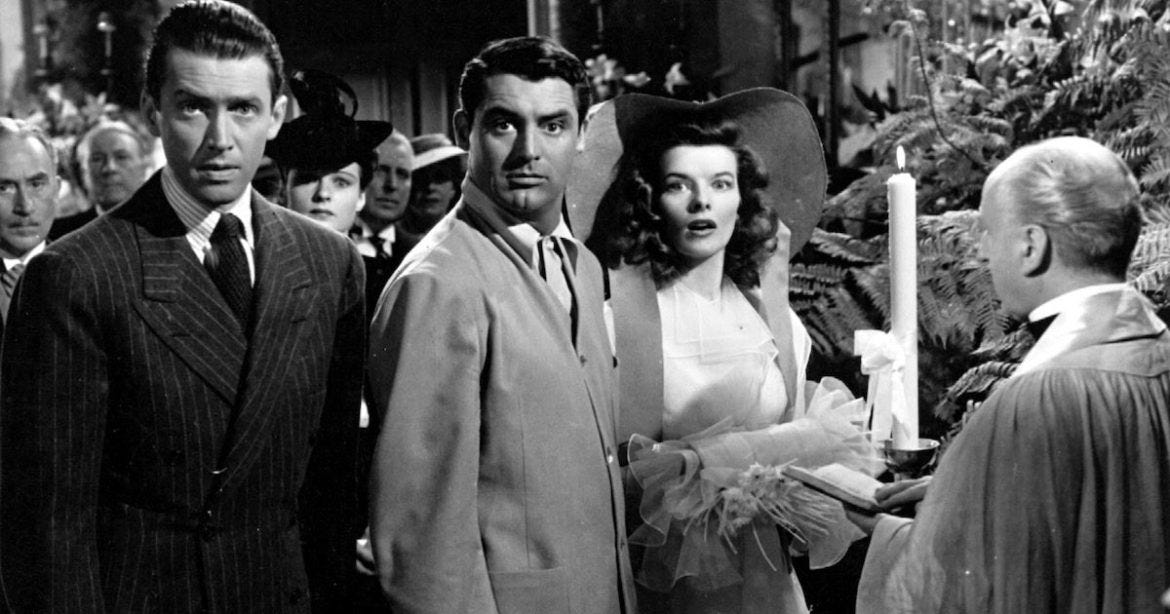
The Comedies of Remarriage
Over the last year or so, Susanna and I have been watching the films on a list drawn up by philosopher and film critic Stanley Cavell, films which he called “comedies of remarriage.” I’m not a big fan of Cavell’s work, and I’m not all that interested in his take on these films—he saw them as Hollywood’s attempt to redefine marriage and romantic relationships without reference to economics or religion, as purely a personal relationship of love. I think that’s a rather superficial and anachronistic take on these films; they are much deeper than that. Still, the list of films is itself fascinating, and all of the movies were enjoyable to watch, especially with my wife beside me. They are all classics, albeit to different degrees. Cavell’s comedies of remarriage are:
It Happened One Night (1934), directed by Frank Capra
The Awful Truth (1937), directed by Leo McCary
Bringing Up Baby (1938), directed by Howard Hawks
The Philadelphia Story (1940), directed by George Cukor
His Girl Friday (1940), directed by Howard Hawks
The Lady Eve (1941), directed by Preston Sturgis
Adam’s Rib (1949), directed by George Cukor

It’s not my intention to discuss all of these films. Rather, I want to raise a problem about watching old films, illustrated by some potential problems with these comedies, and then suggest a solution. Before I do that, let me make some general observations about these films.
Cavell is right that these movies do deal with a particular approach to romantic love. They are all concerned with the war between the sexes. That is, they are all concerned with the conflict between man and woman. That conflict can be enjoyable in itself—or, at least, enjoyable to watch when presented in a witty and sparkling way. But that conflict is also fraught with danger and the potential to harm others, and yet, for all that, is also the occasion for great growth in moral worth. All of the films are about marriages or engagements that have fallen apart before the film, or fall apart during it, but that then move towards resolution and reunion (or union with a more suitable spouse); in that sense, they are “comedies of remarriage.” All of the films are about embracing the goods of marriage, which requires self-sacrifice, but also allows each party to become better than they were.

These films are united in that they each have very strong, confident female leads (Katharine Hepburn in The Philadelphia Story is probably the strongest)—though that strength is always presented as a good in itself, as something great and beautiful, but also a temptation to dominate others. When present, male strength is presented as having similar strengths and weaknesses, but often the male characters are weak, and must learn to be strong. Marriage is presented as the solution to the conflict of men and women—not as a state that eliminates that conflict, but as the proper arena for that conflict to take place, and where it, hopefully, can become a mad but joyful dance.
That, indeed, is the feeling of all of these films: male-female relationships are a breathless dance, a wild romp, and normally the occasion for constant hilarity, even in the midst of conflict, of a particular ridiculous kind–most of these films are often referred to as “screwball comedies.” These are some of the funniest movies there are; Bringing Up Baby might be the very funniest, and its humor is zany beyond belief: an impossibly confident but scatter-brained woman (Katharine Hepburn) has been sent a leopard as a pet, and at the same time she meets an equally scatter-brained but mousy paleontologist (Cary Grant) who has recently been sent the dinosaur bone he most wants, and hilarity (and a seemingly impossible but perfect romance) ensues. Similarly crazy situations are found in each of these films. In Adam’s Rib, for example, Spencer Tracy and Katharine Hepburn are lawyers married to one another, who end up representing opposite sides in the trial of a woman who fired a shot at her philandering husband. As the trial goes on, their attempts to best one another become increasingly crazy: at one point, to take just one example, Hepburn calls as an expert witness an acrobat from the circus who hoists her husband into the air during the trial.

The Problem: Old Hollywood Films are Ridiculously Unrealistic
Having heard that we were watching these films, a friend recently posed to us the question of why one should watch old films. Our friend noted that conservatives often pitch old films, like these “comedies of remarriage,” as showing human lives and loves more realistically than contemporary films. Some claim that unlike films made since the end of the Hays Code era, those made under the Production Code (which includes all of these comedies of remarriage except It Happened One Night) show man and woman as they actually are. But, our friend objected, this just isn’t true. Contemporary films and shows (at least, contemporary serious dramas and comedies, not action films, raunchy comedies, horror flicks, and so on) often present things much more realistically, with all the gritty ambiguities of normal life. By contrast, older films often seem to trade in stereotypes, hackneyed scenarios, or preposterous events (this is probably more true of older Hollywood films, than of classic films from Europe or Asia). They presented an overly idealized view of men and women, not people as they actually are.
These criticisms seem to apply quite well to the comedies of remarriage. In real life, almost no one cracks the fast-talking witticisms that are the continual dialogue in, say, It Happened One Night. The intricate love-triangles and love-quadrilaterals and cases of obviously mistaken identity in The Lady Eve or Philadelphia Story can seem contrived. Rarely, if ever, does one find actually oneself in such situations, where (as in The Philadelphia Story) a woman previously married to one man, is now engaged to another, but then encounters yet a third man (who is nearly engaged to a second woman), falls somewhat in love with him, but is thereby shown how wrong she was to be divorced from the first man—all in the space of a day or two.
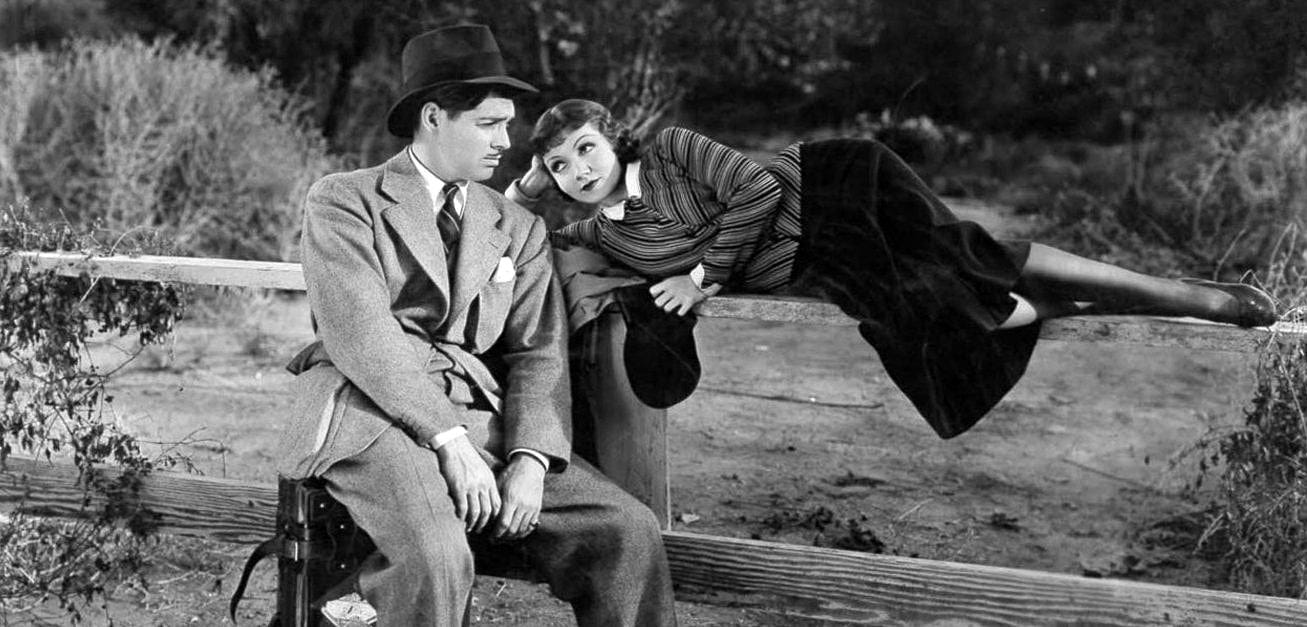
With their screwball comedy vibe, these films revel in continually adding layer after layer of complexity for comedic effect. But that effect requires, our friend contended, a ridiculously high level of suspension of disbelief. And the payoff from suspending one’s disbelief, she contended, is low: these films are nothing but stereotyped characters in extraordinarily unrealistic situations, resulting in impossibly contrived resolutions. Artwork that more realistically imitates human life, in all its nuanced everydayness, would seem, perhaps, to be much more worth our time, if what we seek from films is aesthetic enjoyment or intellectual insight. It hardly needs to be added that, from many contemporary perspectives, these films contain many offensive elements: the men make many apparently misogynistic remarks, the women are by turns harshly brash, unduly submissive, and constantly willing to objectify themselves or be objectified, everyone is drunk and smoking all the time. What, then, is the point of watching such films?
The Solution: Yanagi Sōetsu’s Philosophy of Crafts
Even prior to my latest watching of these films, I was inclined to like and defend them. I’d be happy to watch Cary Grant in anything whatsoever (among these films, he stars in The Awful Truth, Bringing up Baby, The Philadelphia Story, and His Girl Friday). When I was younger, I didn’t appreciate Katharine Hepburn or Jimmy Stewart all that much (although Vertigo and The Man Who Shot Liberty Valance have always been among my favorite films), but they have significantly grown on me recently. The zany, fast-talking style of humor is the sort of comedy I most like. (I was raised on a steady diet of the Marx Brothers, and I’ve done the same for my children.) There’s a scene in the film Amadeus where Mozart, discussing The Marriage of Figaro, talks about how, at one point in the opera, a trio becomes an quartet, which then becomes a quintet, and so on, all sustained for twenty minutes. The humorous scenes in these films is like that—layer upon layer, character upon character added into the hilarious mix, just to see how long pure comedic delight can be sustained.
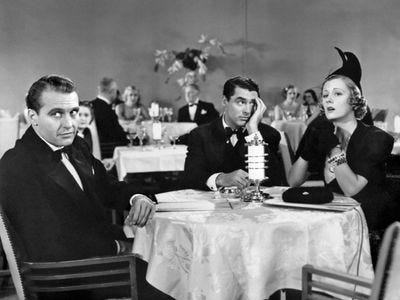
Furthermore, the ostensibly misogynistic and objectifying aspects of these films need not, in most cases at least, be seen that way. Rather, in most cases, they are expressions of a vitally alive and confident dynamic between the sexes, one in which the foibles and follies of men and women are treated with remarkable mercy and forgiveness, in a way that reminds me of that most humorous and forbearing of novelists, Anthony Trollope. In these films, man and woman are thoroughly different and thoroughly equal. At the end of Adam’s Rib, Katharine Hepburn expresses doubt as to whether, given their equalities (of both talent and ability to manipulate the other), there are any differences among the sexes. Spencer Tracy gets her to admit that there’s a least a little difference, and then, as he roguishly closes the curtains around their bed, enthuses “vive le différence!” What our contemporaries, in their progressive prudishness see as sexism, is rather the vital and joyous celebration of that différence. That celebration was, I contend, aided by the strictures of Hays Code. Whatever damage the production code did to filmmaking, it placed constraints on screenwriters that forced them to be creative in their writing, making these films masterpieces of double entendre and other kinds of wordplay. Mild censorship provides the conditions for excellent comedy; when anything goes, writing gets sloppy.
But none of this addresses my friend’s core criticism of these old Hollywood films: the lack of realism in the characters and plots. This requires a different response. I don’t deny that there’s something to this critique. These films, like most films that have been made, are commercial productions, not so much deliberate works of art; they were made quickly, and made with escapism in mind, whatever morals they may have to teach. They all have that combination of boisterous over-optimism and preachiness that is the most embarrassing feature of the American character. There is much in the characters that runs to stereotype, much in the plots that is contrived. I fully grant all of this.
I came to more fully see what is worthwhile precisely in these films’ unrealistic presentations of men and women as I was reading a book of essays by the Japanese philosopher of crafts, Yanagi Sōetsu, The Unknown Craftsman. Yanagi was a great champion of Korean and Japanese folk crafts, helping to preserve dishes, textile work, and furniture made not by famous artists but by unknown artisans, and articulating what is beautiful and worth preserving about such works.
Seeing what is worthwhile in a 16th century tea bowl or a farmer’s coat from the 19th century Japanese countryside requires us first to suspend our critical judgments and just look. What we then come to see are patterns—that which can be intuited in nature, that which is essential in nature, even though it never appears in nature in its own right. Great craft is always an exaggeration of these patterns hidden in nature, so that they can be brought into view. The stylized forms of animals and plants in folk crafts is not how plants and animals look realistically, but seeing these patterns allows us to see into the way that those things fundamentally are, even better than seeing them in nature does. Looking at the exaggerated depiction of bamboo on a piece of Korean clothing allows me to grasp what it is to be bamboo better than looking at bamboo itself does. The exaggerated patterns of things are always a little grotesque, but they are not deceptive. Most importantly, the craftsman does not deliberately aim at producing patterns; when later trained artists try to imitate the craftsman’s approach and intentionally produce patterns, what results is artificial and inauthentic. Rather, the folk craftsman is just trying to make bowls or tables or whatever, and what results is pattern.
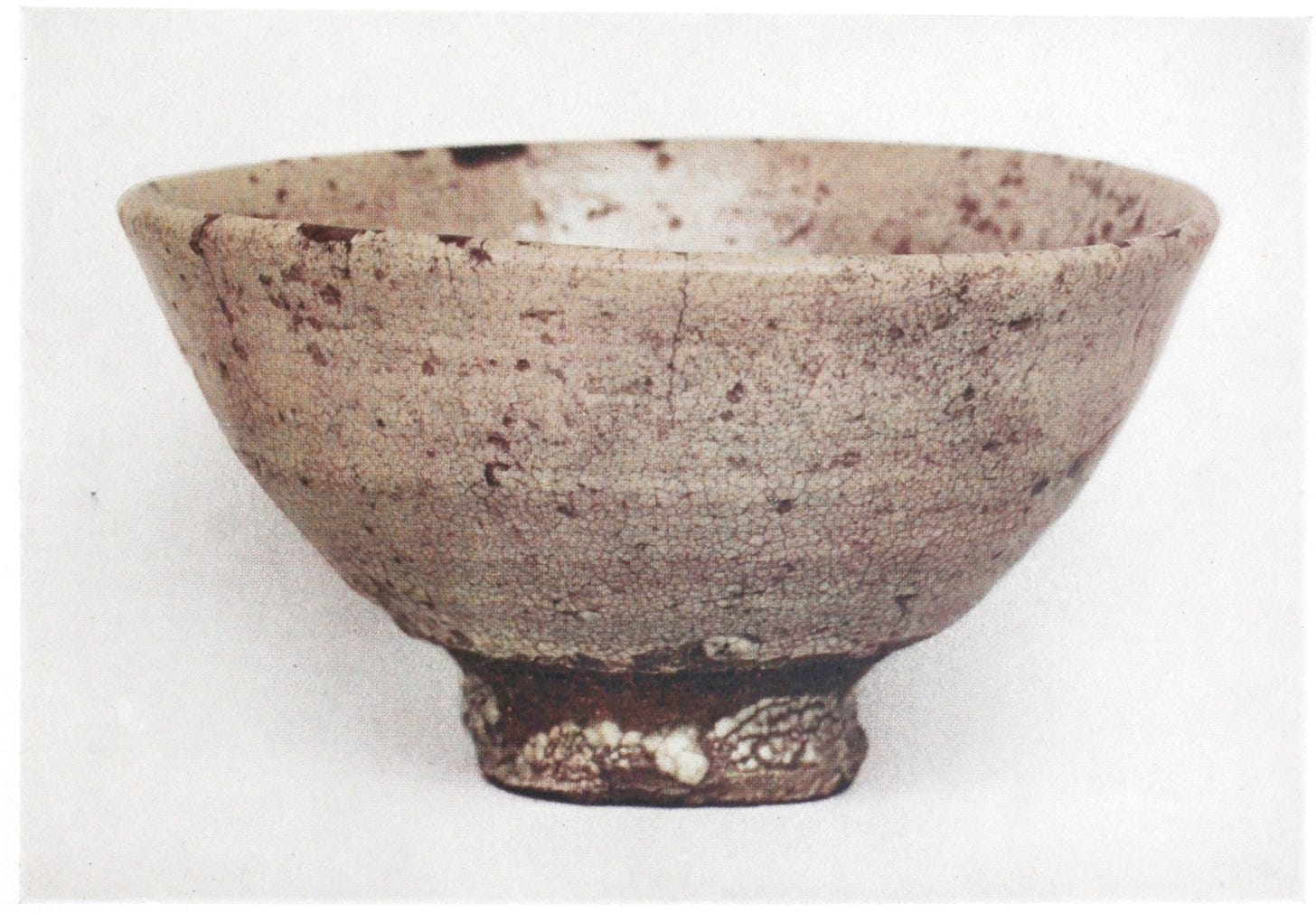
Hollywood films are not, of course, the result of anonymous folk craftsmen; they are commercial products made by big companies. I don’t want to overstate my case here! But I think that, nevertheless, Yanagi’s account of patterns and of craftsmanship helps us make sense of what is worthwhile in the comedies of remarriage. The filmmakers were just aiming at producing an entertaining film, one that would allow people burdened by the Great Depression and World War II to escape their troubles for a little while, and maybe learn a moral lesson along the way. But, like the artisans of medieval Korea and Japan, they thereby hit upon genuine patterns.
What they give us is not man and woman, courtship and marriage, the wit available to human speech, and so forth, as they actually exist in real life. Rather, what they give us is patterns of how these things exist: they give us these things extracted from everyday life, exaggerated (perhaps grotesquely at times) and presented for our contemplation and enjoyment. Patterns, Yanagi says, are more realistic than reality: they give us the essences (like Platonic Forms, or, in Yanagi’s Buddhist approach, the “unchanging formlessness beyond all phenomena”) that stand behind and give meaning to everyday things and events. Susanna and I found the patterns regarding marriage depicted in these films, with their grotesque exaggeration of the arguments and chaos of the married life, remarkably cathartic and helpful to watch together. But there are many other patterns revealed in these films beyond those having to do with marriage: patterns of the comic features of life, of con artistry and friendship, of work and law. It’s the way that they extract these patterns from everyday life and present them beautifully that makes these comedies of remarriage classics, and well worth watching.





